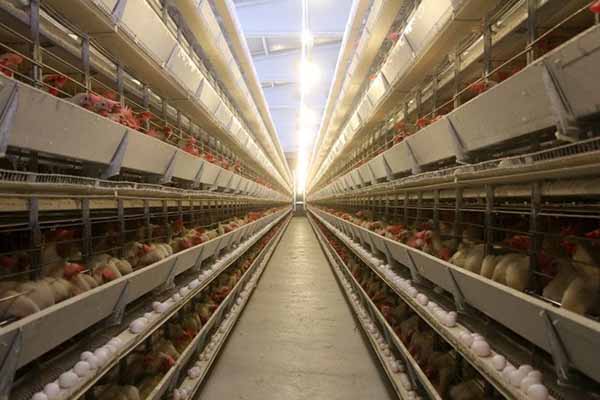Tanzania Chicken Farm Automation Equipment: Profit Analysis and Implementation Guide
Time : 2025-04-23
As the demand for chicken meat continues to rise globally, Tanzania is no exception. With a growing poultry industry, many chicken farmers are looking to improve their operations through automation. In this article, we will discuss the benefits of automation equipment for Tanzania chicken farms, conduct a profit analysis, and provide a practical guide to help you get started.
Introduction to Automation in Chicken Farms
Automation in chicken farming refers to the use of technology and machinery to streamline various tasks, such as feeding, watering, temperature control, and health monitoring. By integrating automation equipment, farmers can reduce labor costs, improve the quality of chicken products, and increase productivity.
Benefits of Automation Equipment
1. Efficiency: Automation equipment ensures that tasks are performed consistently and efficiently. This leads to reduced waste and improved productivity.
2. Cost Reduction: Although the initial investment might be high, the long-term cost savings from reduced labor, lower feed consumption, and improved health can outweigh the initial expenses.
3. Health Monitoring: With automation, farmers can monitor the health of their chickens in real-time, leading to early detection of diseases and timely treatment.
4. Enhanced Growth Rate: Proper feeding, temperature, and humidity control provided by automation can lead to faster growth rates for chickens.
5. Quality Assurance: Automation ensures that all processes are standardized, leading to consistent quality in chicken products.
Profit Analysis: Is Automation Worth It?
To determine the profitability of automation equipment for Tanzania chicken farms, we must consider several factors, including the initial investment, operational costs, and potential savings.
1. Initial Investment: The cost of automation equipment can vary widely, depending on the scale of the farm and the specific equipment required. For a small farm, the initial investment might range from $10,000 to $50,000, while a large-scale operation could require an investment of $100,000 or more.
2. Operational Costs: The ongoing costs include maintenance, electricity consumption, and potential repairs. These costs can range from $500 to $5,000 per month, depending on the size of the farm and the complexity of the automation system.
3. Potential Savings: The potential savings can be found in various areas, such as reduced labor costs, lower feed consumption, and improved health and growth rates for chickens.
Let’s assume a small-scale farm with an annual production of 50,000 chickens:
– Labor Costs: Hiring 5 workers for 8 hours a day, 7 days a week, would cost approximately $25,000 per year.
– Feed Consumption: By using automation to optimize feeding, the farm can reduce feed consumption by 10%. This results in a savings of $5,000 per year.
– Health and Growth Rates: Automation can lead to an improved growth rate and reduced mortality rate. Assuming a 5% improvement, the farm can save an additional $5,000 per year.
Considering the initial investment of $20,000, the total savings would amount to $30,000 per year. Therefore, the payback period for the investment would be approximately 2 years.
Practical Guide to Implementing Automation in Tanzania Chicken Farms
Now that we have discussed the benefits and potential profitability of automation, let’s look at how to implement automation in your Tanzania chicken farm.
1. Assess Your Needs: Begin by assessing your farm’s specific needs. Determine which tasks you want to automate and the scale of automation required.
2. Research and Select Equipment: Research the available automation equipment and select the best options for your farm. Look for reputable manufacturers and suppliers with good customer reviews.
3. Budgeting: Create a budget for the project, considering both the initial investment and the ongoing costs.
4. Installation: Hire a professional installer or consult with the manufacturer to ensure that the equipment is properly installed and integrated with your existing systems.
5. Training: Train your staff on how to use the new automation equipment. This will ensure smooth operation and maximize the benefits of the system.
6. Monitoring and Maintenance: Regularly monitor the performance of the automation system and perform necessary maintenance to keep it running efficiently.
Conclusion
Automation in Tanzania chicken farms offers numerous benefits, from increased efficiency and cost savings to improved quality and health of the chickens. By carefully assessing your needs, budgeting, and implementing the right automation equipment, you can enhance your farm’s profitability and ensure a sustainable future in the poultry industry.












